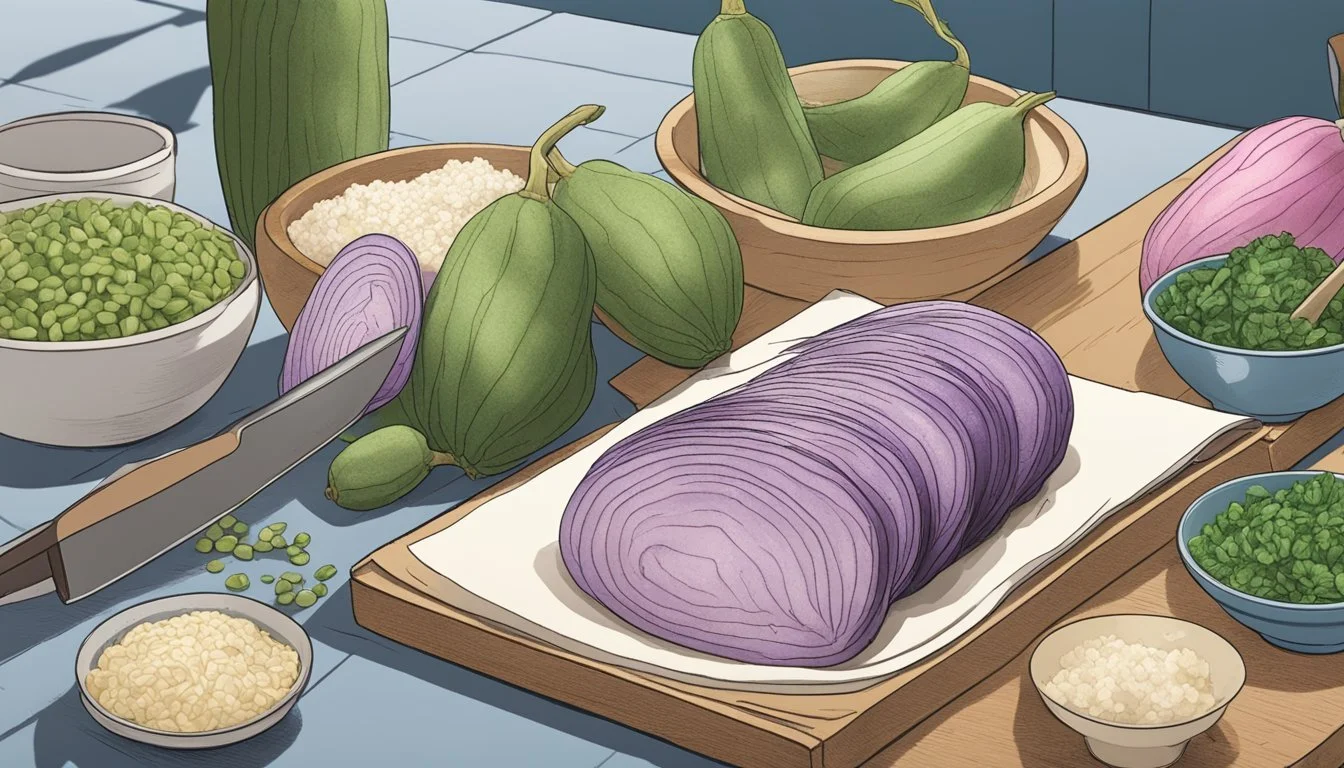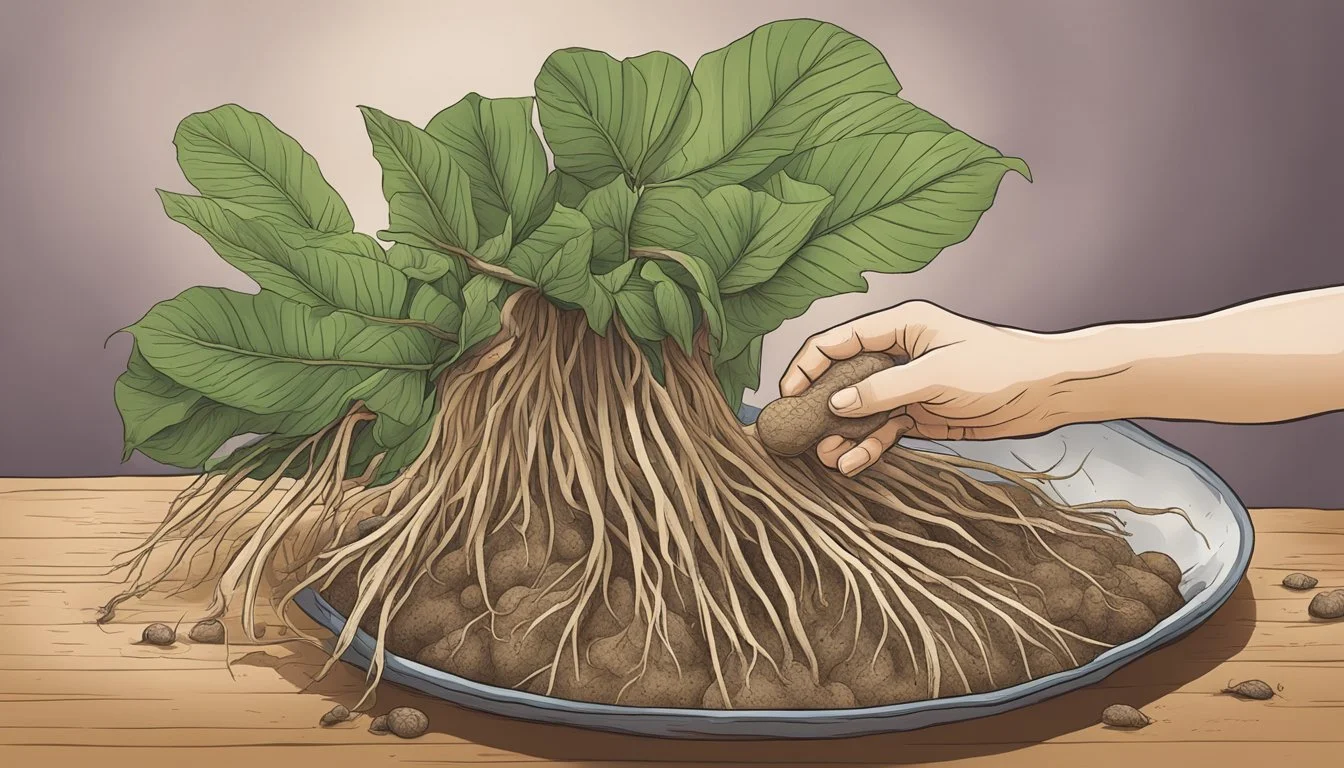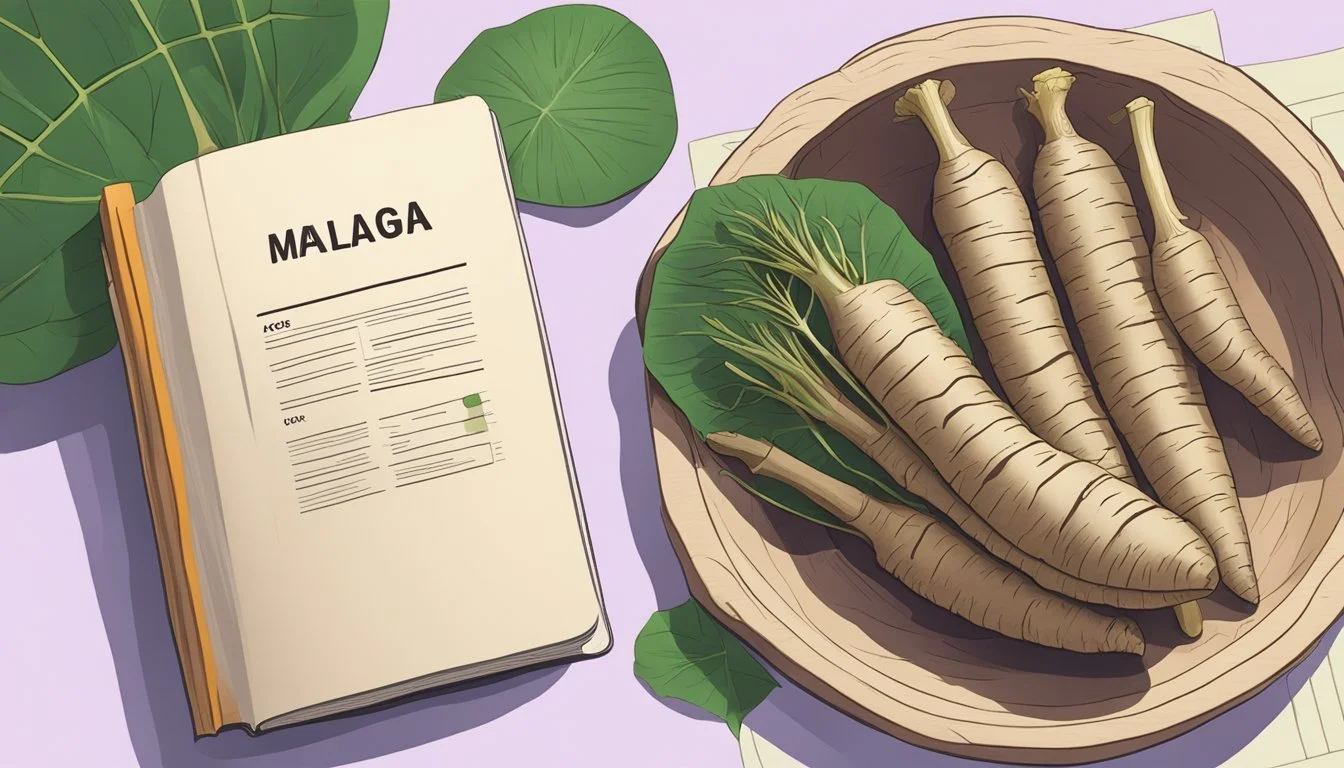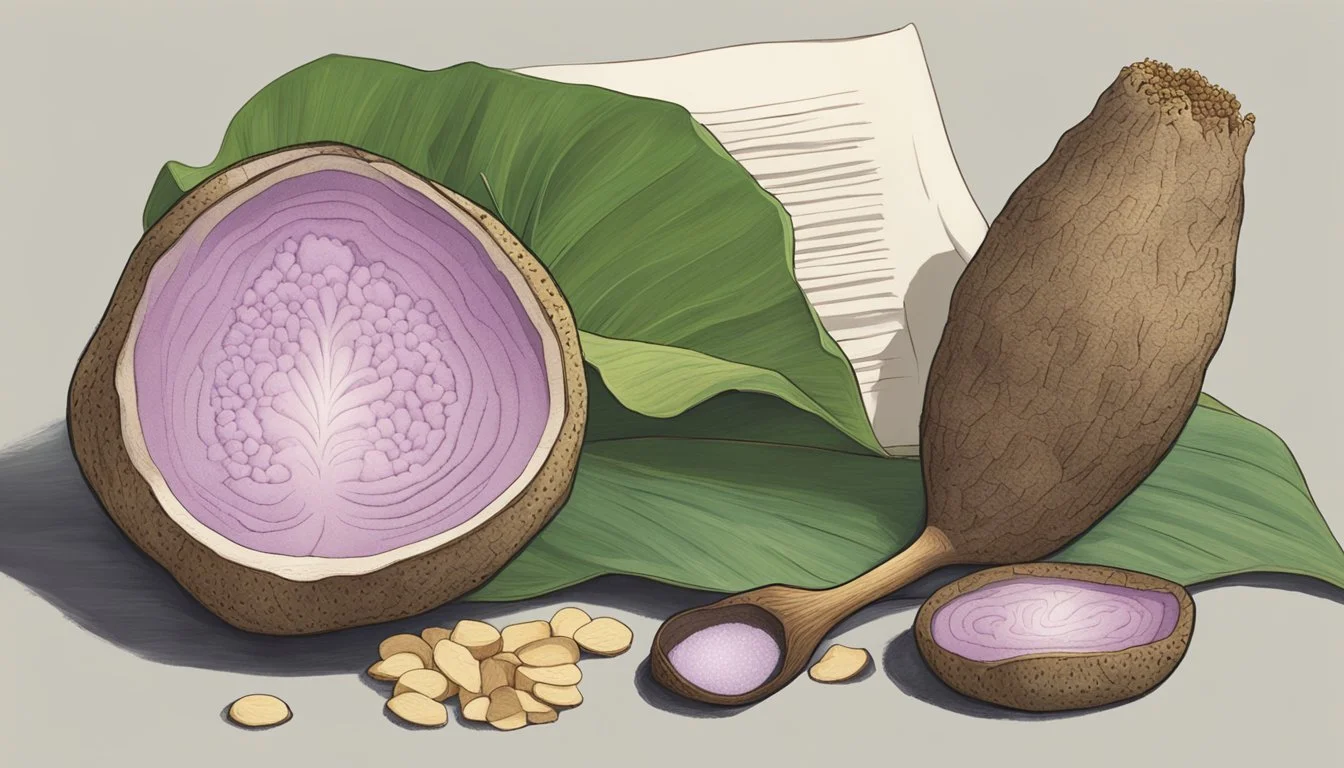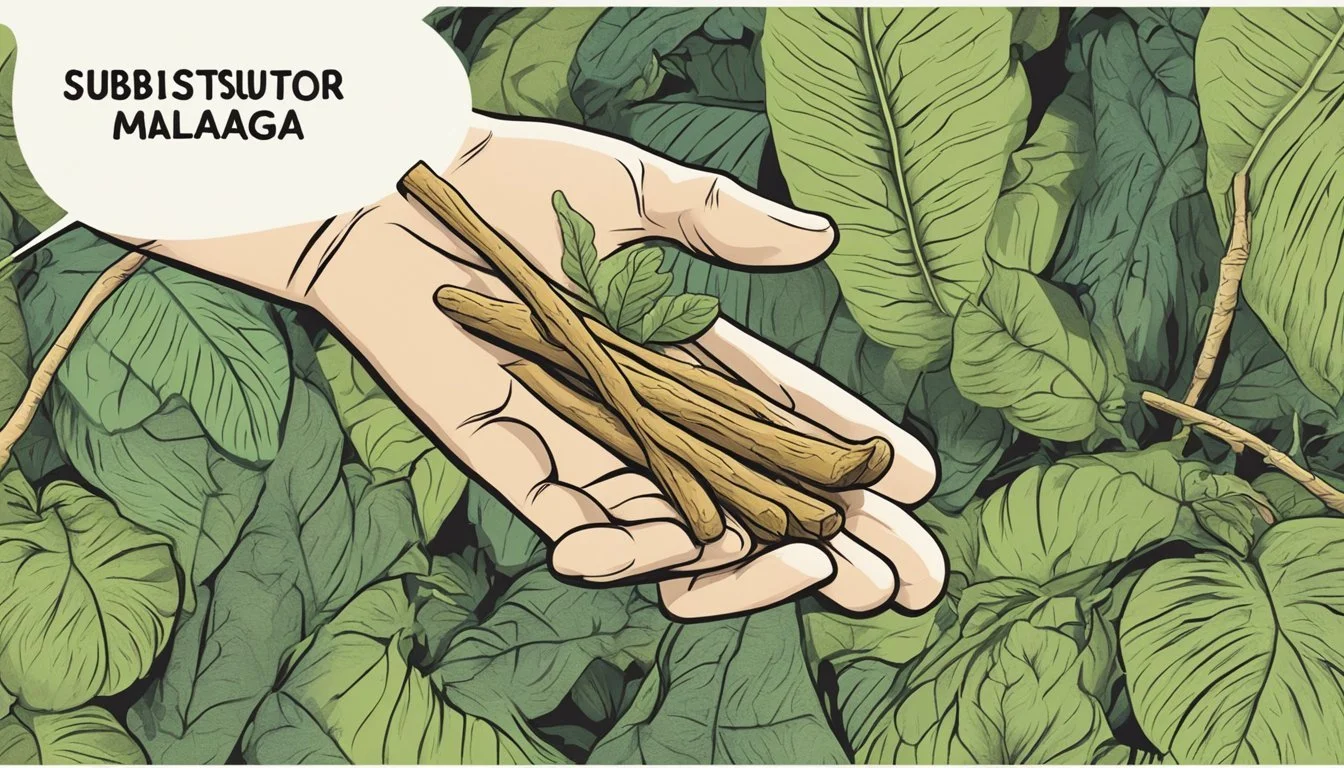How to Substitute Malanga for Taro in Your Favorite Recipes
Malanga, a tuber native to tropical America, is steadily emerging as a popular substitute for taro in culinary applications. While both malanga and taro belong to the root vegetable family, subtle differences in texture and flavor can influence the outcome of dishes. For those looking to expand their cooking repertoire or accommodate dietary restrictions, understanding how to effectively use malanga in place of taro becomes invaluable. With its earthy taste and versatility, malanga accommodates a variety of cooking methods, from boiling to frying.
Substituting malanga for taro often involves simple adjustments to cooking methods and seasoning to preserve the desired dish's integrity. The process of swapping these roots is straightforward, making it accessible for home cooks and professional chefs alike. Malanga's dense texture stands up well to mashing and can contribute to a creamier consistency in soups and stews, enhancing the dish's heartiness. In addition to its culinary flexibility, malanga is appreciated for its hypoallergenic qualities, making it an excellent option for those with food sensitivities.
Understanding Malanga and Taro
Malanga and taro are tropical root vegetables, related yet distinct in their properties and uses. Malanga, scientifically known as Xanthosoma sagittifolium, is commonly found in the Caribbean and parts of South America and Africa. It's recognized by its elongated shape and brown or black skin. Taro, on the other hand, referred to as Colocasia esculenta, is more rounded and is a staple in Asian and Caribbean cuisines. The plant is colloquially called "elephant ear" due to its large leaf structure.
Nutritional Value: Both malanga and taro are rich in nutrients. They offer a good source of fiber, vitamins, and minerals. They are particularly high in potassium, vitamin C, magnesium, calcium, and folate, in addition to several B vitamins. Due to their dietary fiber content, they provide health benefits such as improved digestion. These root vegetables are low in fat, gluten-free, and have a low glycemic index, making them a health-conscious choice for many.
Family and Varieties: Each belongs to the Araceae family and there are various cultivars suitable for different dishes. Malanga is firm and holds up well to frying, thus ideal for creating crispy fritters or chips. Taro's texture after boiling is softer, which works well for mashing and as a thickening agent in soups and broths.
Culinary Uses: In the culinary world, these tubers, or corms, are versatile but should never be consumed raw due to compounds that can cause discomfort. They can be boiled, fried, baked, or steamed to create an array of dishes typical to Caribbean and Asian cuisines.
In substituting malanga for taro, one must consider the desired texture and final presentation of the dish, since each root vegetable has its distinct characteristics that influence the outcome of recipes.
Preparing Malanga for Cooking
In the process of substituting taro with malanga, it is crucial to prepare it properly. Malanga, also known as yautía, must be thoroughly washed, peeled, and cut prior to cooking to ensure the best texture and flavor.
Washing and Peeling Malanga
One should start by cleaning the malanga root using a brush under running water to remove any dirt or mold. The next step is to trim the ends and remove the skin with a suitable peeler or knife, which helps to avoid any skin irritation that can be caused by the raw malanga sap. Once peeled, it's imperative to rinse the malanga pieces to remove any residual skin.
Steps for washing and peeling:
Brush under running water.
Trim the ends.
Peel skin carefully.
Rinse thoroughly.
Cutting Techniques for Malanga
After peeling, malanga should be cut into uniform pieces if it is to be cooked evenly. For boiling or mashing, one can chop malanga into two-inch chunks. If frying, the malanga may be sliced thinly to ensure they become golden brown and crisp. It's vital that the pieces are of consistent size for even cooking.
Suggested cutting techniques:
For boiling or mashing: Cut into 2" chunks.
For frying: Slice into thin pieces.
Avoiding Skin Irritation
Malanga sap can cause skin irritation for some individuals. To prevent this, it is advisable to wear gloves while handling raw malanga. Additionally, peeling malanga under running water can help to wash away the irritants. Should any irritation occur, one should wash the affected area with soap and water immediately.
To avoid skin irritation:
Wear gloves when peeling and cutting.
Peel under running water.
Wash hands and affected area immediately if irritation occurs.
Cooking Malanga
Malanga is a versatile root vegetable that can substitute for taro in many dishes, undergoing transformative textures and flavors through various cooking methods. It can be prepared by boiling, roasting, frying, or baking.
Boiling Malanga
Boiling is a straightforward method to prepare malanga, rendering it tender for further processing or direct consumption. One starts by washing the malanga root thoroughly and peeling off the skin. The malanga should be cut into chunks and placed in a pot of cold water, then brought to a boil. The cooking time usually ranges from 20 to 30 minutes until the malanga is soft and can be pierced easily with a fork.
Roasting Malanga
Roasting malanga enhances its inherent nutty flavor. The process begins by preheating the oven to 400°F (200°C). Peel and cut the malanga into uniform pieces, toss with a little oil and desired seasonings, and spread onto a baking sheet. One should roast it for approximately 40-50 minutes, turning occasionally, until golden and tender.
Frying Malanga
Frying brings out a crispy texture in malanga, perfect for making chips or fritters. After peeling and slicing the malanga into thin discs or sticks, it should be patted dry. It's then fried in hot oil at a temperature of about 350°F (175°C) until golden brown. This usually takes a few minutes per side. Drain on paper towels to remove excess oil before serving.
Baking Malanga
Baking malanga affords a lighter alternative to frying. Start by preheating the oven to 375°F (190°C). Prepare the malanga by peeling and slicing it, then arrange the slices on a baking sheet lined with parchment paper, and season as desired. The malanga should be baked until it's tender, which typically takes about 25-35 minutes. Use a fork to test for doneness.
Substituting Malanga for Taro
When one seeks substitutes for taro in culinary applications, malanga provides an appealing alternative. Despite the common confusion due to similarities in appearance and usage within recipes, both possess distinct qualities that allow them to stand alone in various dishes.
Flavor and Texture:
Malanga offers a milder, slightly earthy flavor compared to taro's nuttier taste. In texture, malanga has a softer, less starchy feel, yet adapts well to a range of cooking styles. These differences should be kept in mind while substituting malanga for taro to ensure the flavor profiles of dishes remain balanced.
Culinary Uses:
Taro Application Malanga Approach Mashed Boil malanga until tender; mash with a preferred amount of liquid for a creamy consistency. Soups Integrate boiled malanga as a thickener for enhanced body and subtle taste. Stews Cut malanga into chunks; add early to absorb flavors. Chips Slice malanga thinly; deep fry to achieve a crisp texture similar to taro chips. Fritters Grate malanga, mix with binding ingredients, and fry to create a unique take on fritters.
In the replacement of taro, malanga demonstrates versatility. It can be boiled, mashed, or even made into chips or fritters. As a potato substitute, it's not as starchy as taro but still provides a substantial base in starchy recipes.
For those avoiding nightshades like sweet potatoes, malanga serves as a worthy substitute thanks to its starchy texture and ability to blend into soups and stews. When preparing mashed malanga, one can incorporate broths or creams to enrich the dish while mimicking mashed taro's satisfying texture.
It is critical, however, that malanga should never be consumed raw due to potential irritants that are neutralized through cooking.
Incorporating malanga into cuisine traditionally calling for taro invites an exploration of new textures and flavors within established recipes, broadening one's culinary repertoire.
Post-Cooking Tips and Tricks
After cooking malanga, the proper handling of leftovers is essential for maintaining quality. The following subsections provide guidance on how to store and reheat malanga to ensure the best taste when serving again.
Storing Cooked Malanga
Once malanga is cooked, it should be allowed to cool to room temperature before storage. To store cooked malanga:
Cool down: Ensure it's cooled within two hours of cooking to prevent bacterial growth.
Airtight container: Place in an airtight container to maintain freshness.
Refrigeration: Store in the refrigerator where it can last for 3-5 days.
Freezing: For longer storage, freeze it in covered airtight containers or heavy-duty freezer bags.
Reheating and Serving Suggestions
To reheat and serve malanga, they should be warmed just enough to reach the desired temperature without altering the texture and flavor.
Oven reheat: Spread on a baking sheet and warm in a preheated oven at 350°F until heated through.
Microwave: Use a microwave-safe dish and cover it with a microwave-safe lid to retain moisture. Heat on medium power, stirring occasionally.
Stovetop: Gently reheat in a skillet over medium heat with a little bit of butter or oil.
When serving reheated malanga, one might consider adding fresh herbs or a sprinkle of cheese to enhance flavor, or serve alongside a protein or vegetable to create a balanced meal.
Complementary Foods and Recipes
When substituting malanga for taro, it is essential to consider its compatibility with a range of other ingredients and cooking methods. Malanga pairs well with a diverse selection of foods, providing a satisfying base for many recipes.
Bold Flavors: Root vegetables such as malanga, when mashed, absorb flavors well. Utilizing robust seasonings like garlic or herbs, along with butter, enhances the dish's richness. For a creamy texture, one could add a touch of cream or coconut milk.
Side Dishes: Malanga can be transformed into vibrant side dishes. For example, malanga mash serves as an excellent companion to roasted meats. Alternatively, it can be cut into chunks and boiled until tender, then incorporated into stews for added thickness.
Cuisine Integration:
Caribbean: As chips or fritters, malanga is a staple carbohydrate, capturing the essence of the region's cuisine.
Asian and African: These cuisines may include malanga in their soups, utilizing its ability to thicken broths.
Healthy Alternatives:
Yam: A similar root vegetable, yam can also be boiled or fried, offering an alternative starchy component in recipes.
Boiled and Mashed: Those opting for less fat in their diets can simply boil and mash malanga without excessive butter or cream.
Crispy Delights:
Fritters: Blended with gluten-free flour and parmesan, malanga fritters provide a crispy, satisfying treat.
Chips: Sliced thinly and fried, they become a delightful alternative to traditional potato chips.
When cooking malanga, chefs recommend being mindful of its water content, particularly when choosing between boiling or roasting, with the latter technique enhancing its inherent sweetness. Its versatility in texture allows malanga to substitute taro in most recipes, providing a unique taste and nutritional profile to the culinary experience.
Health and Nutrition Insights
When substituting malanga for taro, one can expect to find comparable health and nutritional benefits. Both are robust sources of nutrients and provide a gluten-free option for those with dietary restrictions. Malanga, specifically, is rich in fiber and contains a variety of vitamins and minerals, such as vitamin C and folate.
Nutritional Value:
Malanga is lower in calories and has a lower glycemic index than taro, making it a favorable option for blood sugar management.
Taro root contains high levels of dietary fiber, contributing to improved digestion and gut health.
Texture and Taste:
Malanga offers a firmer and drier texture when boiled, which can influence the final dish's texture. It is often used in recipes that benefit from its ability to retain shape, such as fritters or chips.
Taro, with its softer texture, can be used in recipes requiring a smooth consistency, like purees and soups.
Health Benefits:
Both roots are low in fat, supporting a heart-healthy diet.
The fiber in malanga and taro contributes to a feeling of fullness, assisting in weight management strategies.
Gluten-free property ensures suitability for those with gluten intolerance or celiac disease.
By integrating malanga or taro into one's diet, an individual can gain diverse nutritional benefits. For example, malanga's potassium content helps regulate blood pressure, while the folate present aids in converting carbohydrates into energy, supporting overall metabolism.
It's important to note that when boiling either root, nutrients can be lost. Thus, cooking methods that preserve nutritional value are advisable.
Cultural Significance and Varieties
Taro and malanga, also known as yautia or cocoyam, are starchy root vegetables that hold significant cultural importance in various regions worldwide. In the Caribbean, both are staples, essential to classic dishes like sancocho, a hearty stew. While in Asia, particularly Southeast Asia, taro is featured prominently in both savory and sweet recipes.
In South America and regions of Africa, taro and malanga are not only culinary favorites but also part of the cultural heritage. Malanga, especially, is deeply intertwined with South American cuisine, often used much like yams or eddo (a variety of taro). These root vegetables are frequently referred to as elephant ear plants due to the shape of their leaves.
Here's a glance at their varieties and flavors:
Taro: Known for its nutty flavor, it is categorized by origin — e.g., Chinese, Hawaiian, Indian, and West Indian taro. Each variety has nuances in flavor and texture, making them versatile for different culinary applications.
Malanga: It has a woodsy taste and a range of types identified by the region. Its texture adapts well to various cooking methods, from boiling to frying.
Table 1: Popular Varieties in Cuisine
Region Vegetable Popular Name Used in Caribbean Taro Dasheen Sancocho Southeast Asia Taro Colocasia esculenta Desserts, Curries South America Malanga Yautia Mixed with other roots Africa Taro Eddo Fufu
These root vegetables are not only important for their flavor profiles in Asian and Caribbean cuisines but also for their nutritional value, being high in fiber, potassium, and vitamins. As substitutes for one another in culinary settings, understanding their cultural significance and varietal characteristics enhances the authenticity and appreciation of the dishes they are used in.
Shopping and Selection Guide
When shopping for malanga as a substitute for taro, consumers should carefully assess the appearance and texture of the root vegetables. Malanga typically has a brown, hairy exterior which may appear somewhat shaggy. Shoppers should look for firm specimens that suggest freshness and avoid any that have soft spots or signs of decay.
Malanga Selection Checklist:
Firm to the touch, indicating freshness.
Free of soft spots or signs of spoilage.
Brown and hairy exterior, characteristic of malanga.
No visible mold or sprouting eyes.
Malanga can either have a long and skinny shape or be slightly round, depending on the variety. Taro, on the other hand, generally presents a more uniform, round shape. When looking to substitute malanga for taro, buyers may need to adjust their expectations regarding shape and size.
Origin plays a role in selection. Malanga finds its roots predominantly in the Caribbean, South America, and parts of Africa. Meanwhile, taro is native to Southeast Asia and Southern India, thriving in warm and moist climates.
Storing Malanga: To maintain the quality of malanga, store it in a dry place — a pantry or cupboard typically suffices. Avoid refrigeration as the cold can alter its texture and flavor.
Textural differences between malanga and taro are notable: malanga's dry and firm texture makes it excellent for dishes requiring structure, such as fritters or chips. Taro usually has a more smooth texture, often presenting with a purple or white flesh, in contrast to malanga's lighter hue. These variations may slightly affect the end result of the chosen dish but can still provide a delightful culinary experience.
Preventing Spoilage and Safe Handling
When substituting malanga for taro, it is crucial to ensure proper storage to prevent spoilage and to handle the root safely to avoid skin irritation. These starchy tubers share similar requirements for storage and preparation.
Storage:
Keep malanga in a cool, dry place, away from direct sunlight. Optimal storage conditions will prolong freshness and minimize the risk of mold development.
Do not wash malanga before storing as excess moisture can promote decay.
Use a ventilated basket or a perforated plastic bag to store malanga, ensuring good air circulation.
Handling Precautions:
When handling malanga, individuals should wear gloves to avoid potential skin irritation caused by the sap, especially if they have sensitive skin.
The skin of malanga should be removed before cooking, as it is not edible and can be tough.
Signs of Spoilage:
Inspect malanga regularly for signs of spoilage, such as soft spots, an off odor, or visible mold. Discard any spoiled portions promptly to prevent the spread of mold.
Cut away small affected areas; if spoilage is extensive, it is best to discard the malanga.
To ensure longevity and safe consumption of malanga, consumers must stick to these guidelines. Proper handling and storage are key to maintaining the quality of malanga when using it as a substitute for taro.
Allergies and Dietary Restrictions
When substituting malanga for taro, individuals should consider the implications for those with allergies and various dietary restrictions. Malanga is typically well-tolerated by people with food sensitivities, as it is gluten-free, which suits those with celiac disease or gluten intolerance.
Nutrient Malanga Taro Allergen Rarely allergenic Rarely allergenic Gluten Gluten-free Gluten-free Fat Content Low in fat Low in fat Carbohydrates High High
Malanga is also considered to be low in fat. Therefore, it is a suitable option for people who are on a diet that requires low-fat food options. However, those monitoring their carbohydrate intake should be aware that malanga, like taro, is high in carbohydrates. Malanga is a starchy root vegetable, and while it provides energy and fiber, it may not be suitable for low-carbohydrate diets.
For those with specific allergies, malanga is not commonly associated with allergic reactions. While both malanga and taro are generally safe for the majority of the population, as with any food, there is always a potential for an individual to have a unique sensitivity or allergy. It is always recommended to consult with a healthcare provider or an allergist if food allergies are a concern.
It's also important to mention that malanga can sometimes be confused with yuca (cassava), which has different properties. Individuals seeking nightshade-free substitutes for potatoes often find malanga and taro to be excellent alternatives. Those who have not previously consumed malanga should introduce it into their diet gradually to ensure there is no sensitivity or adverse reaction.
Conclusion
When substituting malanga for taro in your cooking, consider the textural differences; malanga is firmer and drier, making it excellent for dishes that require a sturdy root vegetable. Due to its ability to retain form, malanga is a suitable replacement for taro when making fritters, chips, or any recipe where a crispy texture is desired.
It is noteworthy that while both roots are versatile, malanga's slightly sweeter flavor profile means that it can bring a new dimension to traditional taro-based dishes. However, malanga's sweetness is subtle and does not overpower, allowing it to blend well into savory meals.
For cooks concerned about aesthetics, malanga's brown or black skin differs from taro's lighter brown to white skin. This change in skin color may slightly alter the final appearance of the dish.
In preparation methods, both roots are similar; they can be boiled, mashed, baked, or fried. To ensure a smooth culinary experience, one should peel and cut malanga into similar-sized chunks, as with taro, to guarantee even cooking.
In summary, malanga serves as an excellent substitute for taro, offering resilience in texture and a complementary flavor. By keeping these points in mind, chefs and home cooks can confidently incorporate malanga into recipes traditionally calling for taro without compromising the integrity of the dish.


